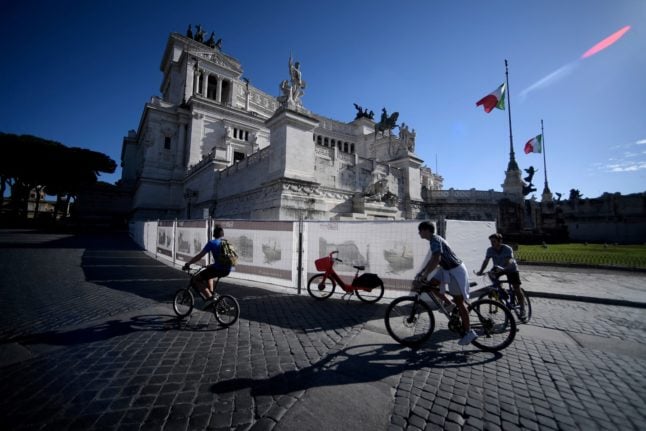The timing of the four-hour strike by staff at public transport companies around Italy on Thursday is set to vary from city to city.
The protest, which is backed by some of Italy’s largest transport unions, was called in mid-June to demand the renewal of collective labour agreements, according to a statement from union Filt Cgil.
It is set to affect all types of local public transport, from surface services (bus, trams, commuter trains and ferries) to underground metro lines, but won’t affect long-distance rail services.
READ ALSO: Key dates: The transport strikes to expect in Italy in summer 2024
Taxi services around the country won’t be affected by the strike either.
The level of disruption faced by passengers will depend on the number of transport workers participating in the protest in each part of the country.
According to the latest media reports, commuters in major cities including Milan, Florence, Rome and Naples are all likely to experience at least some level of disruption on Thursday, though the strike may also have an impact in smaller cities and towns.
Milan’s major public transport operator ATM said that the strike may affect the normal operation of its services from 8.45am to 12.45pm.
Services by Trenord, which operates a number of regional trains in the northern Lombardy province, including airport links to and from Milan Linate and Milan Malpensa, may also be affected by the walkout from 9am to 1pm, according to a statement.
Should airport link services be cancelled, replacement buses will run the same routes, Trenord said.

In Rome, public transport operator Atac said that the walkout may disrupt services scheduled from 8.30am to 12.30pm.
Atac also said that the normal operation of buses run by Roma Tpl and Autoservizi Troiani/Sap may be affected by the strike over the same time window, but didn’t provide further information.
Autolinee Toscane, which operates a number of urban and suburban buses in the Florence metropolitan area, said that the protest may impact any services from 6pm to 10pm.
Tram lines run by Gest may also experience disruption from 9.30am to 11.30am, according to a company statement.
In Naples, public transport operator Anm said that tram and metro services scheduled from 11.30am to 3.30pm may not go ahead as normal due to the strike.
Anyone planning to travel by public transport in Italy on Thursday is advised to leave extra time for their journey and check the status of their service with the local operator before setting off.
Passengers are advised to check the live status of local services on the transport company’s website or social media accounts on the day of the strike.
Keep up with the latest updates in The Local’s strike news section.



 Please whitelist us to continue reading.
Please whitelist us to continue reading.
Member comments